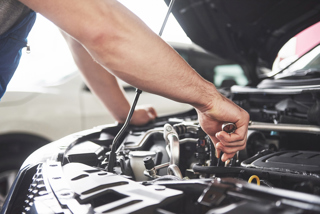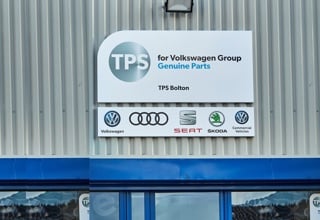Angela Barrow, the chief executive of Emac, talks about selling its millionth service plan, where growth will come from and how dealers can tackle the misconception that they are more expensive.
What’s behind the sustained growth in the UK new car market and will it continue?
Manufacturers have been putting a lot into support schemes to help drive the market and the UK has been like Treasure Island as the rest of Europe has been so difficult. There seems to be a feel-good factor and positivity surrounding dealers we speak to at the moment. There will probably be less manufacturer support in 2014 as European sales start to pick up. A lot of manufacturers are incorporating the service plan into a monthly price for a new car and I think this trend will grow this year.
What has been the biggest development within Emac over the past 12 months?
The service plan model is 10 years old now. It has moved on and we needed to invest heavily to bring us to where I wanted to be. We have 13 people working on development, up from two people in just two years, and a new front and back-end system will roll out early this year. We have sold and administered more than a million service plans, which is a big milestone. We expect to see a lot of organic growth this year.
How has consolidation affected your business?
We have seen consolidation in 2012 and 2013. It seems to be a bit of a change to some of the manufacturers’ thinking to move away from owner-operators. We don’t distinguish between owner-operators or a large group, so it hasn’t affected us negatively. Where we do win is when a larger group acquires a single site that uses Emac. That creates an opportunity for us to expand with other groups who may not have been using us.
Is 60% overhead absorption the new norm and will the industry ever get back to 80% as a benchmark?
Absorption has crept up a tiny bit. Is there a new model or a better model? I think looking at 80% as a benchmark needs to be reviewed. There are still some dealers that will hit 100%, but I doubt the industry will ever get back to that as the norm. The growth in new car sales we have seen will help increase absorption rates anyway and if you’re selling service plans that will help too. The dealers that were best set up to cope with the recession were the ones who had a bank of aftersales customers to help absorb costs during difficult times.
How can the industry tackle the perception that the main dealer is always more expensive?
Dealers do need to better promote their experience, the convenience and service they offer, which is over and above independents. If they are charging a premium price, they’ve got to communicate how much they’re doing for customers. We need to do a better job of promoting how professional this industry is.
Service plans are an established product for new cars. Where will their future growth come from?
For new cars, manufacturers have seen service plans as a good way of keeping customers within the franchised dealer networks. There needs to be more work done to make sure the service plan matches a customer’s PCP period. If 78% of people buy on a three-year PCP, why would they have a two-year service plan?
There is still a massive opportunity with used car service plans. The mindset to change is that the used car buyer is more budget-conscious, therefore doesn’t want the add-ons. A lot of used car sales people have not switched on to service plans as a product. Managers need to realise it’s a natural product for customers looking to manage costs.
Should dealers look to lock in customers beyond the three-year service plan?
Dealers should avoid the temptation. Our system allows dealers to offer longer-term contracts, but the only time you’d really want that is for people who do a lot of mileage. A five-year plan would sacrifice a dealer’s margins when taking into account that the service plans are inflation-proof, plus you’re eliminating the chance to get customers into a new car in the third year.



















Login to comment
Comments
No comments have been made yet.